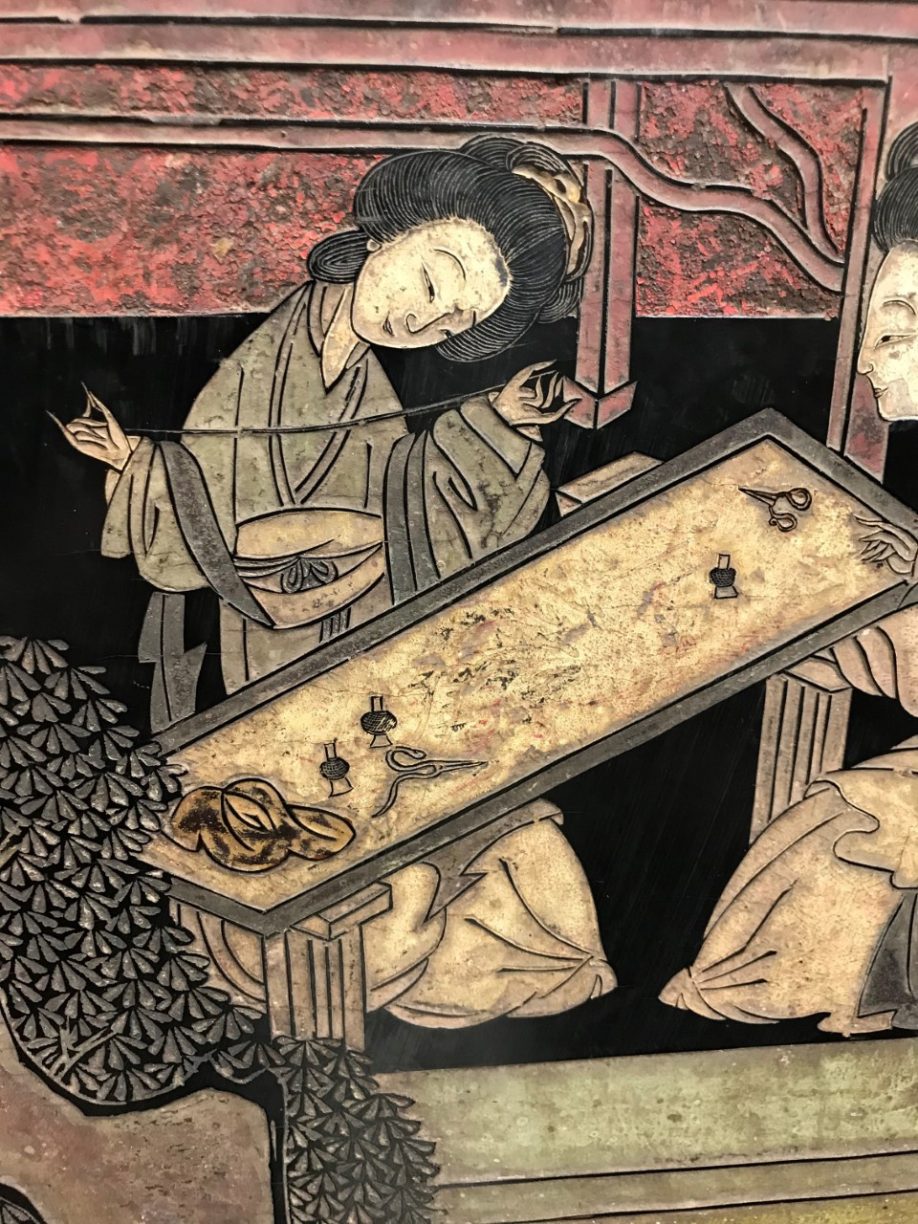
Spring Morning in the Han Palace (detail), Qing dynasty, Kangxi period, 1672, twelve-panel lacquer screen, Freer Gallery of Art, gift of Charles Lang Freer, F1906.42
Palace Life Unfolding: A Chinese Lacquer Screen from 1672 by Jan Stuart
Burke Center for Japanese Art
Online and in-person lecture, April 28, 6–7:30pm
Jan Stuart, Melvin R. Seiden Curator of Chinese Art, Smithsonian's National Museum of Asian Art will deliver this lecture online and in-person (in 807 Schermerhorn Hall at Columbia University, in-person attendance is limited to Columbia students and faculty only). The program is organized by the Mary Griggs Burke Center for Japanese Art at Columbia University.
Spring Morning in the Han Palace, a large Chinese lacquer screen dated to 1672 in the Freer Gallery of Art, exemplifies the shifting, transcultural identity of some works of art. Rendered in the kuancai technique, in which a design is cut into a lacquer surface and filled with pigments and gold, this type of screen is internationally known as “Coromandel lacquer”—named for an Indian transshipping port via which Chinese screens arrived in Europe. Not only does the name obscure their Chinese identity, they are usually studied from a European perspective. This talk refocuses the lens on the origin, status, and meaning of “Coromandel” screens in China.
Read more, click here.
